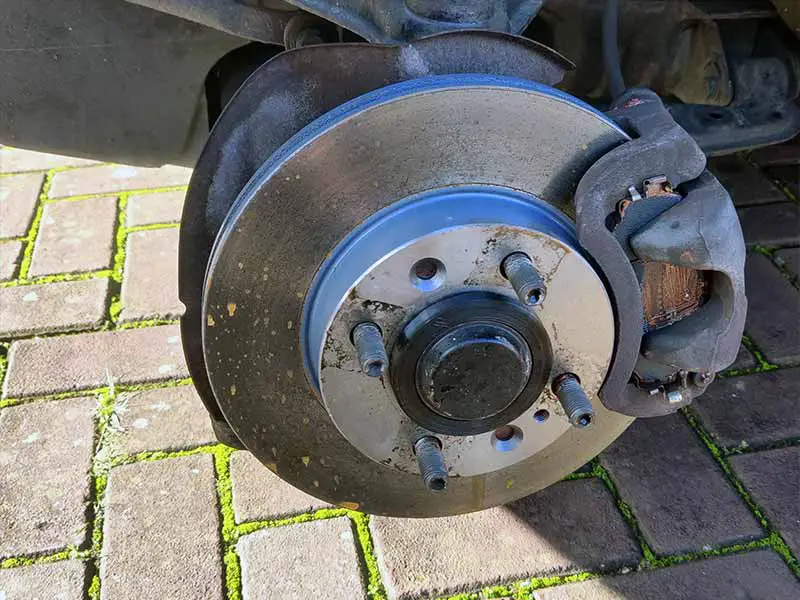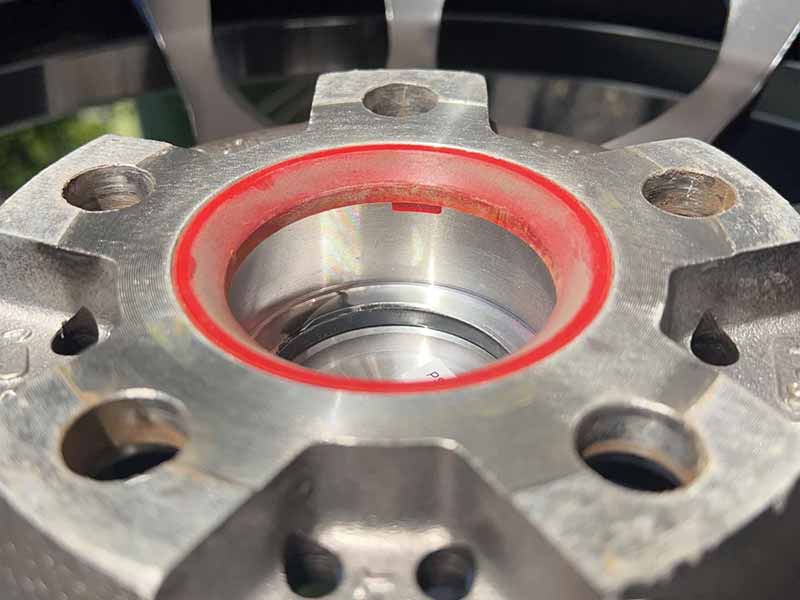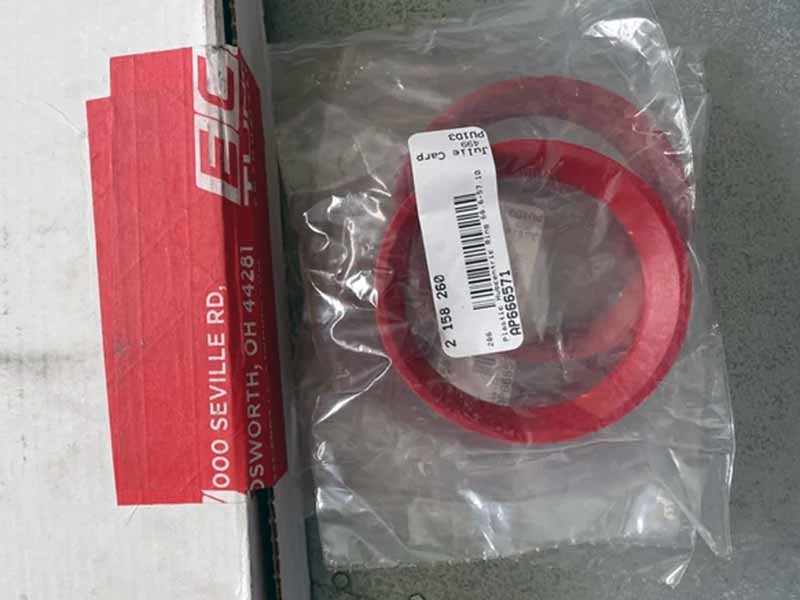You’ve heard about hub centric rings, but what size do you need? The answer isn’t as complicated as it seems. Stick around, and let’s demystify the process together.
How Do I Know What Size Hub Centric Rings I Need?
To determine the size of the hub centric rings you need, measure the wheel’s center bore and the vehicle’s hub diameter. The ring must match the wheel’s center bore size on the outside and the vehicle’s hub diameter on the inside.
In this article, we’ll walk you through the steps to identify the correct hub centric ring size for your vehicle, ensuring a perfect fit for your wheels and a safer, smoother driving experience.

What Are Hub Centric Rings?
In simple terms, these rings act as a custom-made adapter for your car’s wheels. They ensure that the wheel is perfectly aligned with the hub, which is the part that the wheel attaches to on the car. Without these rings, the wheel might rely only on the lug nuts to center it, which can lead to issues like vibrations at high speeds.
If you’re interested in a deeper dive into what hub centric rings are, you might want to read more on What Are Hub Centric Rings?
The Role of Hub Centric Rings in Wheel Installation
When installing a wheel onto a car, it’s important that the wheel fits snugly against the hub. This is where hub centric rings come in. They fill any gap between the wheel’s center bore and the hub, which can vary depending on the make and model of the car and the type of wheel.
From my experience, I’ve seen many customers come back with complaints about vibrations after getting new wheels, only to find out that they didn’t use hub centric rings. It’s a simple component that can make a big difference in the driving experience.
Hub Centric vs. Lug Centric
There are two types of wheel centering methods: hub centric and lug centric. Hub centric wheels are designed to fit snugly onto the hub, which bears the weight of the car. Lug centric wheels, on the other hand, use the lug nuts to center the wheel on the hub. It’s generally agreed that hub centric is the preferred method because it provides a more stable and balanced wheel fitment.
For those who want to understand the difference between these two methods, the article on Hub Centric vs Lug Centricwheels provides a clear explanation.
Choosing the Right Material
Hub centric rings come in different materials, mainly aluminum and plastic. Each has its benefits. Aluminum rings are durable and long-lasting, while plastic rings are more cost-effective and can resist corrosion better.
In my years of working with tires, I’ve found that while aluminum rings are a bit more expensive, they tend to hold up better over time. However, for those on a budget or living in areas with harsh weather conditions, plastic rings can be a perfectly acceptable alternative.
For a detailed comparison of the materials, you might find the information on Aluminum vs Plastic Hub Centric Ringshelpful.
Measuring for the Perfect Fit
Getting the right size for your hub centric rings is essential. Here’s how you can measure for them:
- Measure the Wheel’s Center Bore: This is the large hole in the middle of the back of the wheel. You’ll need a precise measuring tool like a caliper for this.
- Measure the Vehicle’s Hub Size: This is the protruding part of the hub that the wheel’s center bore needs to fit onto. Again, accuracy is key, so a caliper is the best tool for the job.
The measurements must be exact. If the ring is too big, it won’t fit snugly, and if it’s too small, it won’t fit at all. It’s like finding the right key for a lock – it needs to match perfectly.

Hub Centric Rings Example
Selecting the Correct Hub Centric Ring Size
Choosing the right size for your hub centric rings is a critical step in ensuring your wheels are mounted correctly and safely. The size needs to be precise to prevent any play or vibration, which can lead to uneven tire wear and a less comfortable ride.
Importance of Precise Measurements
The hub centric ring’s job is to fill the gap between the wheel bore and the hub perfectly. If the ring is too large, the wheel won’t center on the hub and will rely on the lug nuts to hold it in place, which isn’t ideal. If the ring is too small, it won’t fit at all. The measurements need to be just right.
How to Measure for Hub Centric Rings
To find the correct size of hub centric rings, you’ll need two key measurements:
- Wheel Center Bore: This is the diameter of the hole at the back of the wheel. It’s where the ring will sit.
- Hub Diameter: This is the diameter of the hub’s protruding part where the wheel gets mounted.
Here’s a step-by-step guide to getting these measurements:
- Find the Wheel Center Bore Size:
- Clean the area to ensure an accurate measurement.
- Use a precision tool like a caliper to measure the diameter of the wheel’s center bore.
- Record the measurement in millimeters, as most hub centric rings are measured in this unit.
- Measure the Hub Diameter:
- Clean the hub surface for a clear measurement.
- Measure the diameter of the hub where the wheel sits.
- Write down this measurement as well, ensuring it’s in millimeters for consistency.
Ensuring the Right Fit
Once you have both measurements, the size of the hub centric ring you need is determined by the larger wheel center bore size and the smaller hub diameter. The ring will make up the difference between the two. For example, if your wheel’s center bore is 72.5mm and your vehicle’s hub diameter is 56.1mm, you’ll need a ring with an inner diameter of 56.1mm and an outer diameter of 72.5mm.
When the Size Is Not Exact
If you can’t find a hub centric ring that matches your measurements exactly, it’s better to choose one that’s slightly larger rather than smaller. A ring that’s too small simply won’t fit, while one that’s slightly larger can often still center the wheel properly. However, the best practice is to find the exact size to avoid any potential issues.

Choosing the Right Material for Hub Centric Rings
When selecting hub centric rings, one of the decisions you’ll face is choosing the material they’re made from. The two most common materials are aluminum and plastic, and each has its own set of advantages.
Aluminum Hub Centric Rings
Aluminum rings are known for their strength and durability. They’re less likely to deform over time, which means they can maintain a precise fit for longer. Here’s why you might choose aluminum:
- Durability: Aluminum is a metal that can withstand significant stress and strain, making it less likely to crack or break.
- Heat Resistance: It can handle the high temperatures generated by the wheels, which is particularly important during extended driving or in hot climates.
Plastic Hub Centric Rings
Plastic rings, often made from materials like polycarbonate, are another popular choice. They’re generally more cost-effective and can resist corrosion caused by road salts and other chemicals. Consider plastic rings for:
- Cost-Effectiveness: They are usually less expensive than aluminum rings, making them a budget-friendly option.
- Corrosion Resistance: Unlike metal, plastic won’t corrode, which can be beneficial if you live in an area with harsh winters or salty roads.
Making the Right Choice
In making your decision, consider the following factors:
- Driving Conditions: If you frequently drive in conditions where corrosion is a concern, plastic might be the better option.
- Budget: If cost is a significant factor, plastic rings can provide a balance between performance and price.
- Longevity: For those looking for a long-term solution and who don’t mind spending a bit more, aluminum rings might be the way to go.
Resources
Below are some links you may find helpful when learning about tires:
- What are hub centric rings? – Discount Tire
- What are hub centric rings? Do I need them? – Wheel Pros
Final Thoughts
We’ve covered the importance of precise measurements and the differences between materials. Remember, the key to a successful fit is in the details – accurate measurements and choosing the right material for your driving conditions. If you’re ever in doubt, don’t hesitate to consult with a professional.
Good luck and happy motoring.





